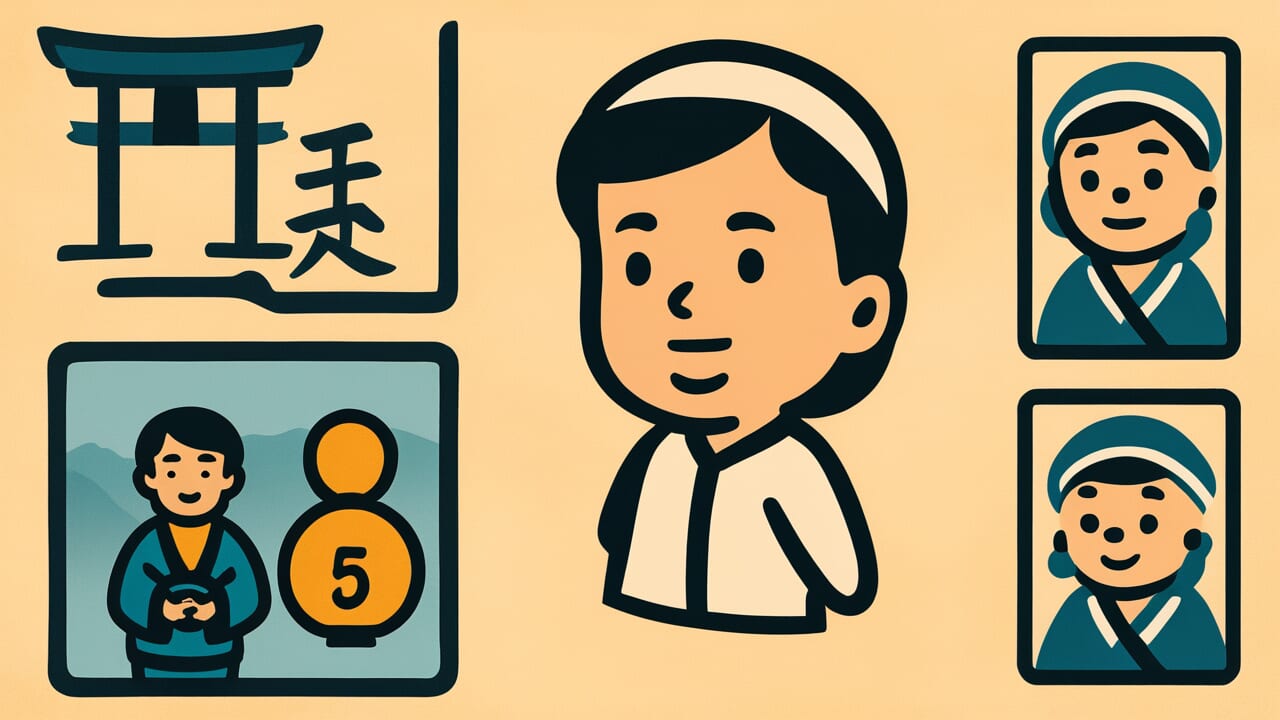How to Read “Seven times to Ise, three times to Kumano”
Ise e nanatabi, Kumano e sando
Meaning of “Seven times to Ise, three times to Kumano”
This proverb means that visiting sacred places should not be a one-time event. Your faith deepens when you return again and again.
A single visit cannot give you all the insights and emotions that build up gradually through repeated visits.
The proverb expresses this deepening process of faith through specific numbers of pilgrimages. Things you couldn’t see on your first visit become visible on your second or third.
Even at the same place, your feelings change depending on your state of mind and life experience. The proverb values this process of spiritual growth.
Today, people use this saying beyond religious contexts. It teaches that you shouldn’t think you understand something after just one experience.
Understanding deepens when you engage with something repeatedly. This applies to learning and art too. The proverb reminds us not to settle for surface-level understanding but to keep returning to deepen our knowledge.
Origin and Etymology
This proverb likely comes from the Edo period. During that time, pilgrimages to Ise and Kumano became extremely popular among common people.
Ise Shrine enshrines Amaterasu, the sun goddess, and ranks as Japan’s highest shrine. Kumano Sanzan served as a sacred site for mountain asceticism.
Both places have attracted believers since ancient times. In the Edo period, improved roads and post towns made pilgrimages accessible to ordinary people.
Ise pilgrimage, called “O-Ise-mairi,” became explosively popular. Many people held the dream of visiting at least once in their lifetime.
The specific numbers “seven” and “three” are interesting. Some say they indicate actual pilgrimage targets.
However, they more likely carry metaphorical meaning: “worth visiting many times.” Seven represents completeness in Buddhism and Shinto. Three is also considered sacred.
Ise receives more visits than Kumano, perhaps reflecting Ise Shrine’s higher status. It may also show the social importance of Ise pilgrimage in Edo society.
This proverb expresses a deep religious view. The path of faith has no end. Each visit brings new realizations.
Interesting Facts
Ise Shrine has a tradition called “Shikinen Sengu.” Every twenty years, they rebuild the shrine buildings. This ritual has continued for over 1,300 years.
It embodies the Shinto spirit of being always new yet always ancient. This connects to the proverb’s idea that each visit feels both familiar and fresh.
Records show that emperors and nobles repeatedly visited Kumano since the Heian period. Retired Emperor Go-Shirakawa made thirty-four pilgrimages to Kumano in his lifetime.
This story demonstrates the depth of his faith.
Usage Examples
- He visits the same art museum many times. Following the spirit of “Seven times to Ise, three times to Kumano,” he says each visit brings new discoveries
- My teacher taught me that, like “Seven times to Ise, three times to Kumano,” reading this classic repeatedly leads to true understanding
Universal Wisdom
This proverb speaks to a deep truth. Human understanding and growth never complete with just one experience.
When we experience something once, we tend to think we “get it.” But actually, returning to the same thing repeatedly reveals new worlds.
The object hasn’t changed. You have changed and grown, so you can now see what was invisible before.
People of faith visited sacred places many times, not out of mere habit. At different life moments—times of joy, sorrow, or confusion—they stood in the same place with different hearts.
Then the same scenery looked completely different. The same prayer words reached their hearts with different resonance.
This accumulation of experiences deepened their faith and their humanity.
This applies beyond faith. Learning, relationships, and encounters with art all work the same way. Thinking you understand after once might mean you only skimmed the surface.
Returning repeatedly and engaging from different angles gradually reveals the essence of things. Our ancestors expressed this truth about human growth through the concrete act of pilgrimage.
When AI Hears This
The ratio of seven to three creates an interesting calculation. Ise represents 70% and Kumano 30% of total visits.
This ratio remarkably matches the golden ratio in optimal stopping theory from mathematics.
Optimal stopping theory says: “Use the first 37% for exploration, then make decisions in the remaining 63%.” For example, when choosing a secretary from 100 applicants, reject the first 37 to learn your standards.
Then hire the first person after number 38 who exceeds all previous candidates. This method mathematically maximizes success.
Viewing Ise and Kumano pilgrimages as exploration and decision processes reveals fascinating structure. Ise was relatively accessible, a place to visit repeatedly and learn standards of faith and spirituality.
This was the exploration phase. Kumano required crossing harsh mountain paths. Experiences there helped people make major life decisions and commitments. This was the decision phase.
The 7-to-3 ratio may represent the balance between exploration and exploitation that Japanese people discovered through experience. Learn sufficiently, then decide.
This proportion nearly matches the optimal ratio proven by modern mathematics. It’s a fascinating example of collective human wisdom’s accuracy.
Lessons for Today
This proverb teaches modern people the importance of “humility in not thinking you understand after once.”
In today’s information-rich society, you can search anything instantly. Surface knowledge comes easily. But does that mean you truly understand?
Important books, moving films, inspiring words—returning to these repeatedly reveals deeper meanings you couldn’t see at first.
Work is the same. One training session or one manual won’t make you perfect. Tackling the same challenges repeatedly and approaching from different angles builds true ability.
Relationships work this way too. Don’t assume you understand someone after one conversation. Trust builds through repeated dialogue.
In an age that values efficiency and speed, this proverb’s teaching shines brighter. The most important things deserve time and repeated engagement.
This attitude enriches your life and helps you grow into a person of depth. Don’t rush. Repeat. Take your time. That’s the path to genuine learning.



Comments